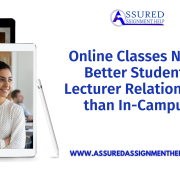Assessment Overview
This assessment must be completed by students individually. The assessment is designed for students to develop understanding of the close links between the business environment, business innovation strategy, business capabilities and business value creation. The
assessment involves writing a word innovation strategy report in response to a real case.
Please note that academic misconduct and late submission penalties will apply to this assessment as per the university policies.
Assessment Guidance
Assessment 1 – Student guide
Hi everyone, It is time to get started on assessment 1. Please take the opportunity to go to class to make sure you understand the assessment 1 task. This is the first step towards a good result. Here is my reply to students about assessment 1. You are also welcome to post your assessment questions online as I am sure you are not the only one. Create a post today or ask a question in your class. I will add questions and answers to the online student guide for
assessment 1.
When working on innovation strategies' it is important to keep the following in mind: "Strategies should not exist in a vacuum. Rather, a strategy should be developed as a response to a particular set of circumstances" (MacIntosh & Maclean, 2015). The following assessment may be of assistance for assessment 1, check it out: Innovation readiness assessment: Introduction (Strategyzer) Innovation readiness assessment (Strategyzer PDF)
Question: what is included in the word count?
Answer: The word count includes the content in the body of the report from introduction to conclusion. The word count excludes the front page, executive summary, table of contents, reference list and appendices. Question: I believe assessment tasks 2 and 3 are fairly generic paragraphs about definitions and the strategy, not specifically related to a particular organisation. Is that correct?
Answer: Correct, assessment tasks 2 and 3 are there to ensure you (and other students) understand these innovation concepts and how they relate. You should understand them well enough to be able to communicate this succinctly. Understanding this should also help
you address assessment tasks 4 and 5.
Question: Assessment task 4 says to “analyse the impact of the selected innovation trend on the selected organisation.” Does this mean the trend has to already have be adopted by the organisation, or is this referring to how the trend could affect the organisation, if it were
to utilise the new technology and integrate it into its innovation strategy?
Answer: You are requested to analyse how the trend could affect the selected organisation and how it could be integrated into its innovation strategy. Imagine that your boss, who is a senior executive of the organisation, have asked you to investigate this. He has delegated this task to you as he needs to deal with it. What he wants to know is: Does the chosen trend create an opportunity or a threat to the organisation? And if so, what does it mean in practical terms. Should the firm include new project initiatives in its innovation strategy to address the trend? Should the organisation fund internal innovation projects to explore what future products it could add to its existing product portfolio. Should the organisation fund internal innovation projects to explore a particular product innovation based on a particular user need? Or can the technology make the organisation’s internal operations more effective or efficient? What is your recommendation to the senior executive(s) responsible for the organisation's innovation strategy in regard to the selected technology trend?
Question: I’m a little unsure of how I would go about answering assessment task 5. Once again, I don’t have a lot of detail Strava’s innovation strategy. Is this more about us recommending specific strategies to Strava to respond to the innovation trend, based on
what we’ve learnt?
Answer: Where limited information is available about the chosen organisation it is ok to make assumptions about it, as long as you note the assumptions in the report. For example, for Strava it is fair to assume that the firm knows how to create software for a website,
mobile apps and hosting data on company servers. https://en.wikipedia.org/wiki/Strava For example go to their website and look for what competences and skills they are recruiting https://www.strava.com/about https://boards.greenhouse.io/strava You will see
that they know a lot about software, but they do not manufacture any physical products themselves. They will have partner companies do that. So you may need to engage with new partners to integrate Strava software into it. Does this help?











